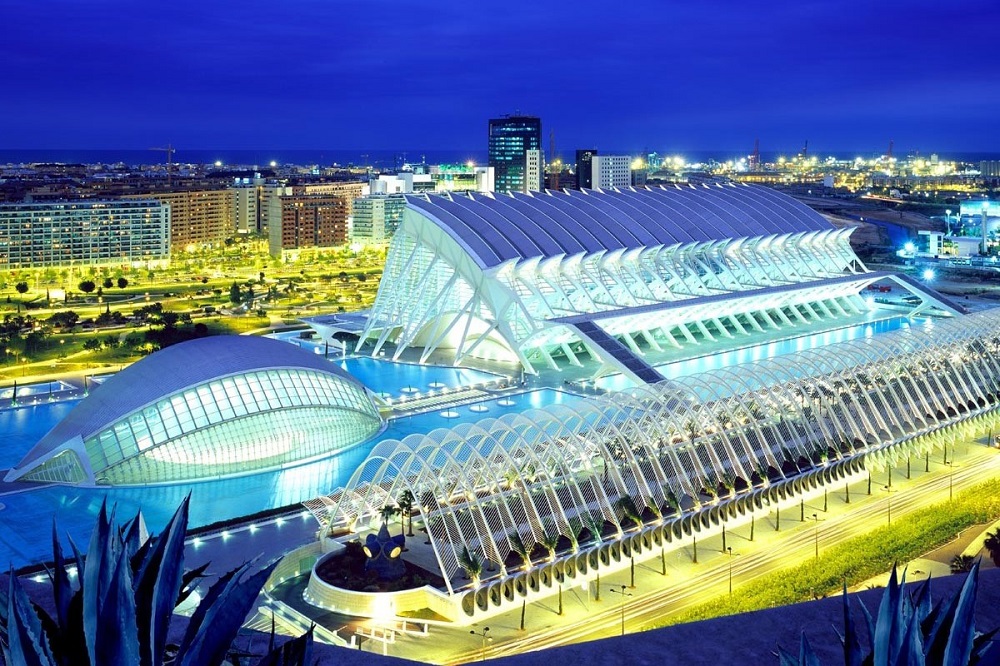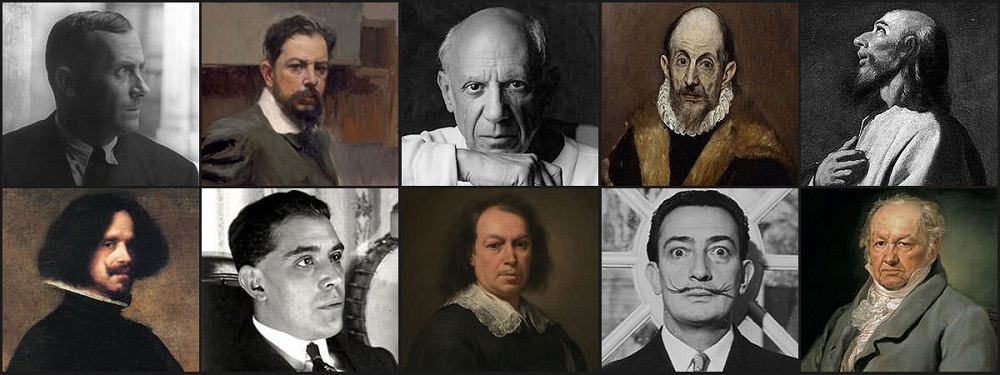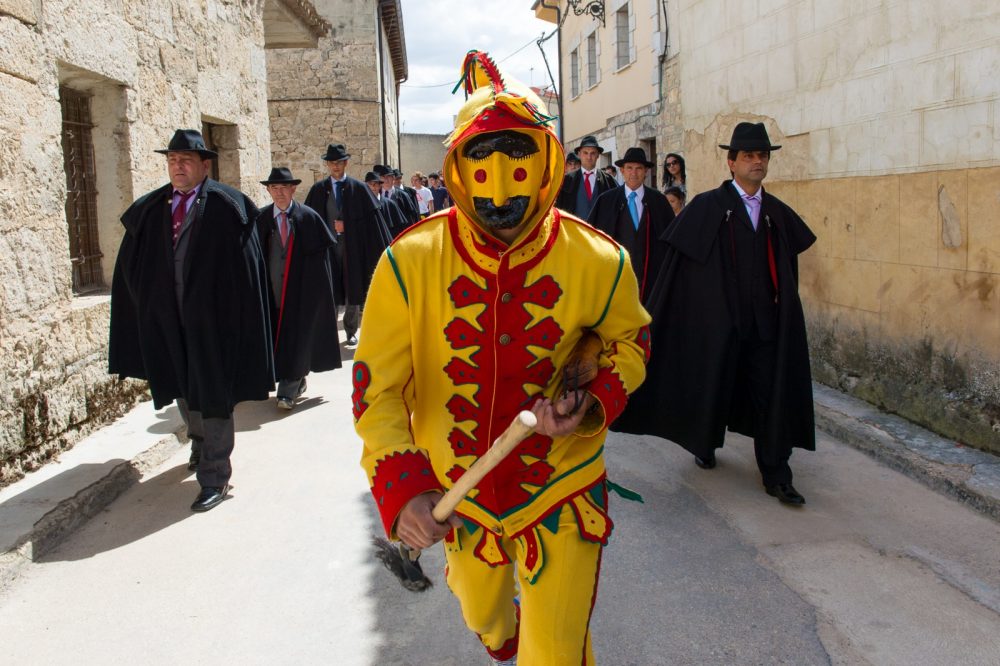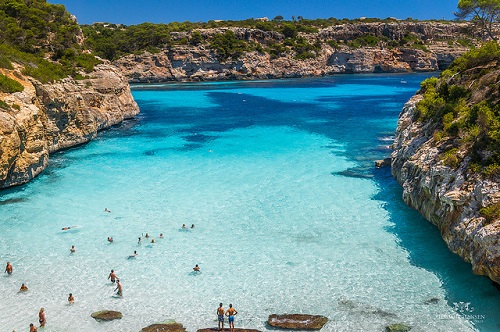Spain possesses an immense number of impressive monuments. People travel across the world to discover the beautiful mixture of cultural attractions.
The list of landmarks in Spain is impressive, from the ancient cathedrals, castles left by the Romans and Moors, the incredible works of art to the futuristic museums. It’s a tough choice deciding which should be at the top of your list to visit!
We have selected our top 10 most famous Monuments in Spain you need to visit when you are on vacation.
1- Royal Palace of Madrid:
 via – getyourguide
via – getyourguide
Royal Palace was completed in 1751 in Madrid and Situated on the site of an Alcazar.
The Royal Palace continues to serve its original protocol functions. It is the official palace for celebrations to their Majesties King Felipe VI and Queen Letizia.
The palace is popular for its artwork, tapestries, and paintings by Velázquez, Goya, Rubens, El Greco, and Caravaggio. In addition, many of its 3,000 rooms are open to visitors.
Moreover, the palace has a breathtaking entrance with a large principal staircase. Passing throughout the Hall of Halbardiers and Hall of Columns. All with soaring ceilings and frescoes by Corrado Giaquinto and Giambattista Tiepolo.
The Grand Throne Room is the most representative and decorated place. That contained fine 17th-century sculptures saved from the earlier Alcázar.
2- The Alcazar of Segovia:
 via – wikipedia
via – wikipedia
The Alcazar is an imposing palace taking place in the province of Segovia in Spain. It’s one of the most popular castles located at the top of the Guadarrama Mountains. Alcazar built as a fortress and later used as Royal Palace, Royal Artillery College, and Military Academy.
The Alcazar Palace constructed by King Alfonso VI in the 11th century. In 1862, the fire destroyed the palace and rebuilt in 1882 by using old sketches of the interior. After accomplishment, the palace became the Military Archives and later an Artillery Academy. In the mid-20th century, the Alcazar is used for cultural activities and as a museum.
Today, the Alcazar serves as a museum. You can see the Hall of Ajimeces that features the collection of arts, the Hall of Kings and the Hall of the Throne.
3- The Alhambra of Granada:
 via – getyourguide
via – getyourguide
The Alhambra is a prehistoric palace, fortress, and citadel situated in Granada, Spain. The upland was built between 1238 and 1358, in the reigns Ibn al-Ahmar, of the founder of the Nasrid dynasty, and his successors.
It overlooks the Albayzin (Albaicín) quarter of Granada’s Moorish old city. At the base of the plateau, the Darro River flows throughout a deep ravine on the north. Besides, the complex surrounded by defensive walls. Also, it extends over 26 acres, 30 towers, with more than a mile of walls and many smaller structures.
The Alhambra was labeled a UNESCO World Heritage Site in 1984. Along with two other related sites, which are the Albaicín (Albayzín), and the Generalife Garden. Besides, it contained residential buildings used for grazing and cultivation. Also it was intended as a place of rest for the Muslim royalty living at the Alhambra.
The Alhambra complex contained many structures but these are the major ones:
The Alcazaba is a military base that lodges guards and their families. The palatial zone included various palaces for the sultan and his kin. The Medina, a district where court officials lived and worked.
There are three independent areas. First, the Mexuar an area for justice administration and state affairs. Second, the Comares Palace is the official residence of the sultan. It has several rooms surrounded the Court of the Myrtles. Last, the Palace of the Lions is a private area for the king and his family and mistresses.
Other popular structures contained the Hall of the Abencerrajes, which has a stalactite ceiling. As well as, The Hall of the Ambassadors is a chamber where Islamic commanders negotiate with Christian emissaries.
4- Barcelona’s Sagrada Familia:
 via – getyourguide
via – getyourguide
The Sagrada Familia known as the unfinished cathedral. The church refers to the Christian faith through a combination of artistic disciplines. It is imposing design and decoration make it one of Europe’s most impressive churches.
In 1883, the popular engineer Gaudí accepted to take on this project. Succeeding Francisco de Paula and put all his background at it until his passing. Gaudí completed the house of prayer of San José, the sepulcher and the entryway of El Nacimiento.
Be sure to discover the interior of the basilica. It is a fancy World, where the columns recreate the shapes of nature and colorful forest of stone.
The church exterior has three facades. First, the Nativity (street Marina), decorated and full of life, refers to the birth of Jesus. Second, the Passion (Sardenya Street), harsher, and reflects the suffering of Christ. Last, the façade of La Gloria (street Mallorca), symbolizes Death, the Last Judgement, Glory, and Hell.
Today the church still under construction. Once the works are completed, the temple will be crowned by 18 towers with different heights depending on the religious hierarchy. The 12 towers will be devoted to the apostles, four to evangelists and one to the Virgin Mary. The last one, dedicated to Jesus Christ.
5- Mezquita of Cordoba:
 via – lonelyplanet
via – lonelyplanet
Cordoba’s great mosque is one of the biggest in the world and known as the Mezquita. Besides, Mezquita considered an example of Islamic art and architecture in Western Europe. The popular monument was named a UNESCO World Heritage site.
The magnificent structure is proof of Moorish design and a lowering sight. The Mosque has 23,400 m² of property. And what fascinates visitors about this place that it has a mosque in a church monument.
Its imposing architectural styles and cultures make it the perfect monument to discover.
6- Aqueduct of Segovia:
 via – wikipedia
via – wikipedia
The Aqueduct of Segovia is one of the most picturesque historical monuments in Spain. It dates back around 50 A.D. Besides, in 1985 it was designated part of the Segovia World Heritage site.
The aqueduct was one of the best-preserved Roman engineering works. Its aim of carrying water 10 miles from the Frío River to the city of Segovia.
The most famous part of the aqueduct is where you can see the arches situated in the Azoguejo square. It is the perfect place for admiring the architecture and taking good pictures. Also is a great spot from where to enter the historic part of the city and explore many other monuments.
7- Guggenheim Museum of Bilbao:
 via – lefigaro
via – lefigaro
Guggenheim Museum is a stunning contemporary architectural masterpiece. Located in the center of Spain’s Basque Country, Bilbao. The museum designed by Frank Gehry and constructed from titanium, limestone, and glass.
Outside the Guggenheim Museum, you will find three major sculptures. First, at the entrance, there is a Puppy designed by Jeff Koons. It measures 1240 x 910 x 850 cm and stands opposite the Guggenheim Museum. It is a steel statue covered with flowers and represents a West Highland white terrier puppy.
Second, the huge sculpture of a spider Maman by the artist Louise Bourgeois. It made of marble and bronze stainless steel. Last, called the Tall Tree and the Eye a permanent installation by Anish Kapoor.
8- City of Arts and Sciences of Valencia :
 via – getyourguide
via – getyourguide
The City of Arts and Sciences is an impressive example of modern architecture. Designed by Valencian architect Santiago Calatrava. The complex made up of the following six areas in the dry river bed of the now diverted River Turia in Valencia.
El Palau de Les Arts Reina Sofía:
A magnificent opera house devoted to performing arts. Measuring over 70 meters in height and divided into four separate halls. All possessing the latest technological advances. Designed to stage all kinds of opera, musical and theatrical performances.
L’Hemisfèric:
Belongs to the City of Arts and Sciences complex. It is a spectacular Laserium, Planetarium, and IMAX cinema over 900 square meters of the screen. The building has the shape of an eye and reflected a 24.000 square meters lake.
El Museu de les Ciències Príncipe Felipe:
The building reminds a whale skeleton. Designated learning sciences through experience. It exhibits everything with texts and pictures, experiments, buttons to touch and experience.
Oceanografic:
Invite us to discover the planet’s major seas and oceans. It housed more than 45,000 examples of 500 various marine species. Representing the most allegorical ecosystems of the planet.
Ágora:
This imposing icon is a convertible space. It hosts different events like the staging of congresses, conventions, concerts, and performances. It can also transform into an exhibition area.
9- Temple of the Sacred Heart of Jesus in Barcelona:
 via – pinterest
via – pinterest
Tibidabo cathedral built by architect Enric Sagnier I Villavecchia. Its design style described as a mixture of modernist and neogothic. It located on the highest mountain of Tibidabo. This means it is recognizable from many of the city streets that have a view of the mountain.
The cathedral has imposing stonework. Beautiful stained-glass windows and viewing platforms to enjoy views of Barcelona.
Visiting the cathedral from the Tibidabo funicular station, you will find yourself at the level of the crypt. It has Gothic and Romanesque decorative elements and a Neo-Byzantine aesthetic. Presenting a plant of five naves finished in a semicircular apse demarcated by thick columns and covered with low vaults.
10- Plaza Mayor of Madrid:
 via – pestanacollection
via – pestanacollection
Plaza Mayor is a large square to take part in the city’s most important celebrations. This plaza measures 129 meters in length and 94 meters in width. Filled with residential buildings having imposing balconies facing the center of the square.
In the centre of the Plaza, you can get close to a majestic statue of King Felipe III on his horse. This statue was created in 1616. Finally, the facade of the Casa de la Panadería dating back to 1590, and covered in beautiful frescoes.


 Top 10 Most Famous Spanish Artists and their Arts
Top 10 Most Famous Spanish Artists and their Arts
 El Colacho, the Baby Jumping Festival in Murcia Spain
El Colacho, the Baby Jumping Festival in Murcia Spain
 Discover The Most Beautiful Places In Mallorca, Spain
Discover The Most Beautiful Places In Mallorca, Spain